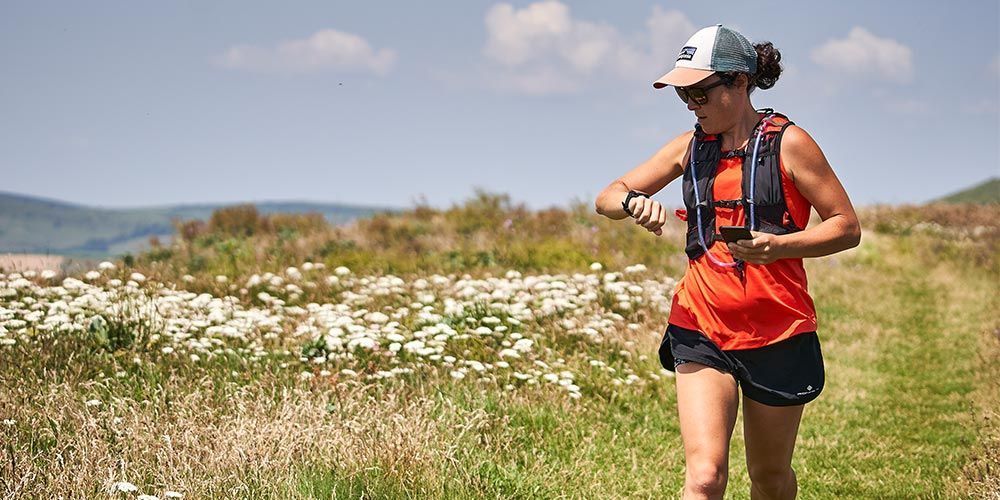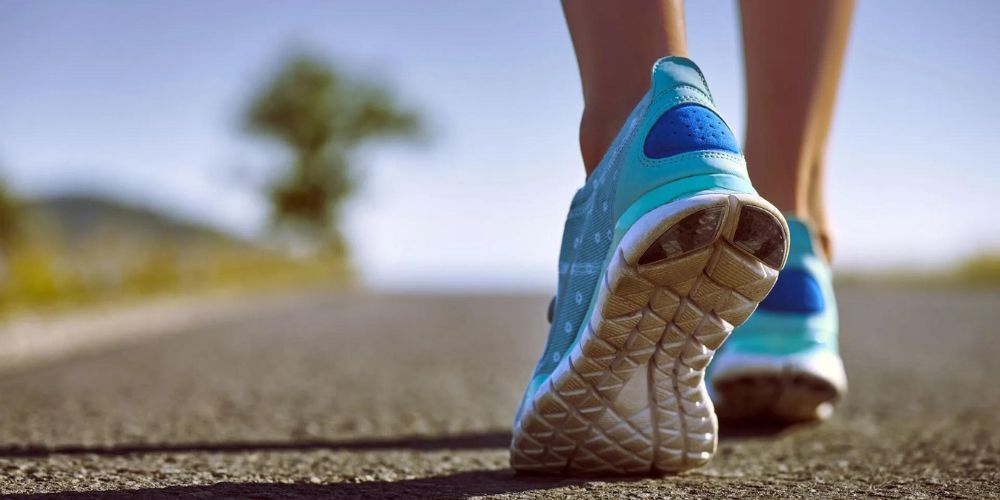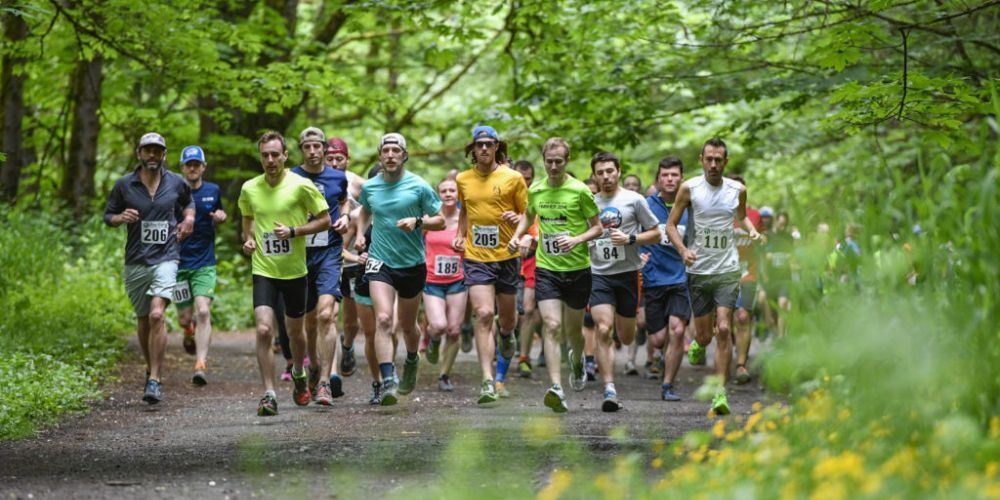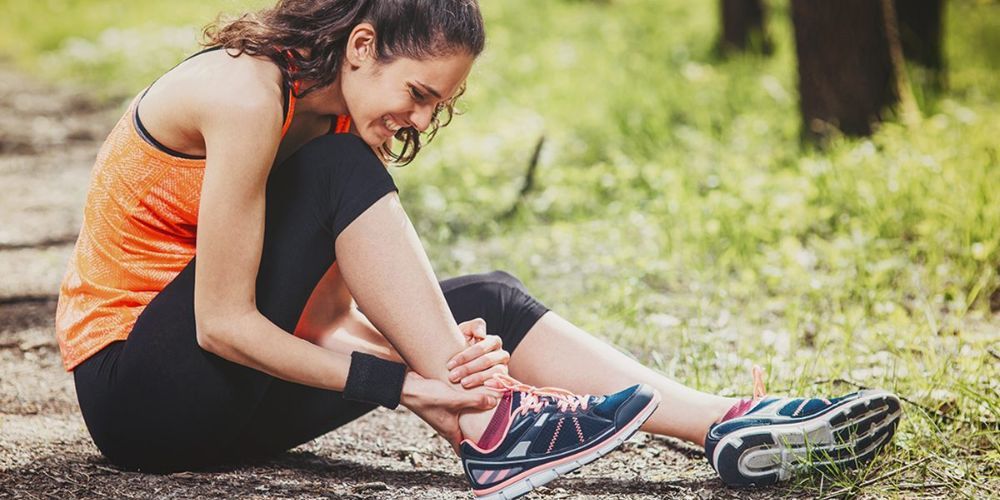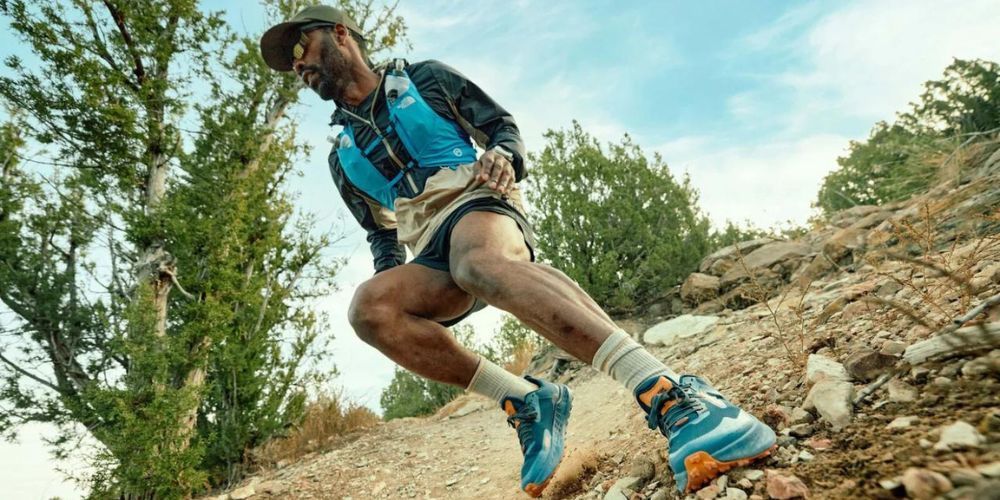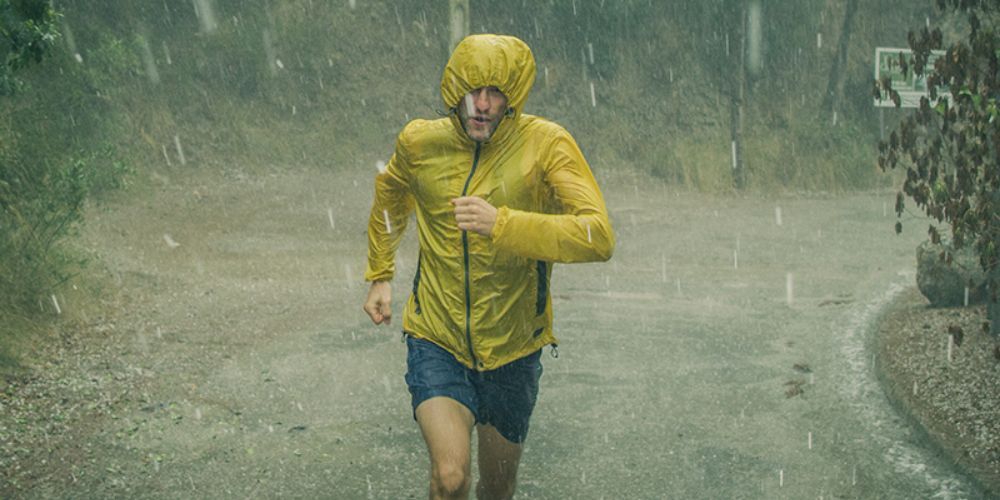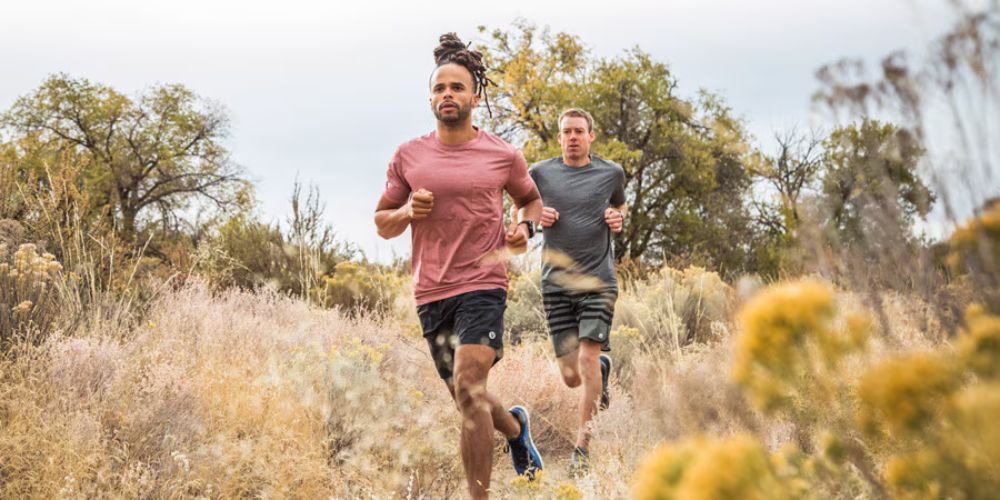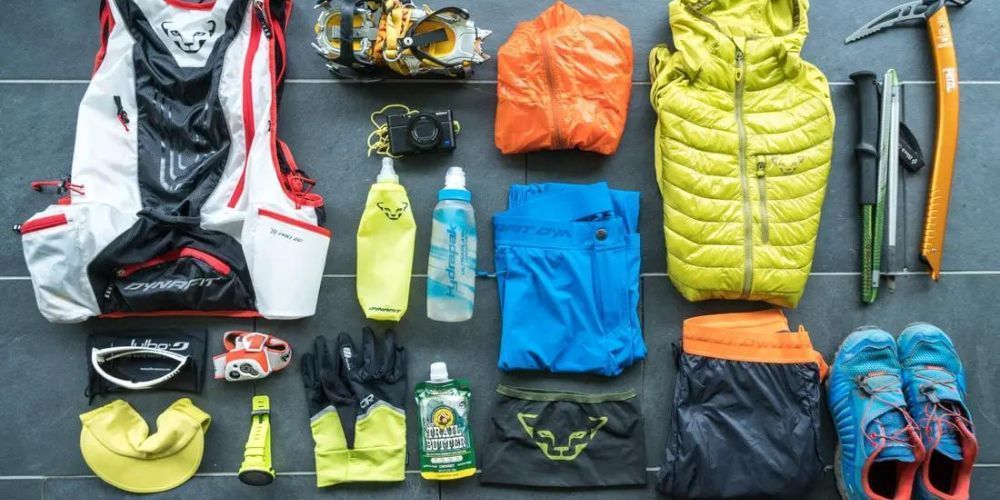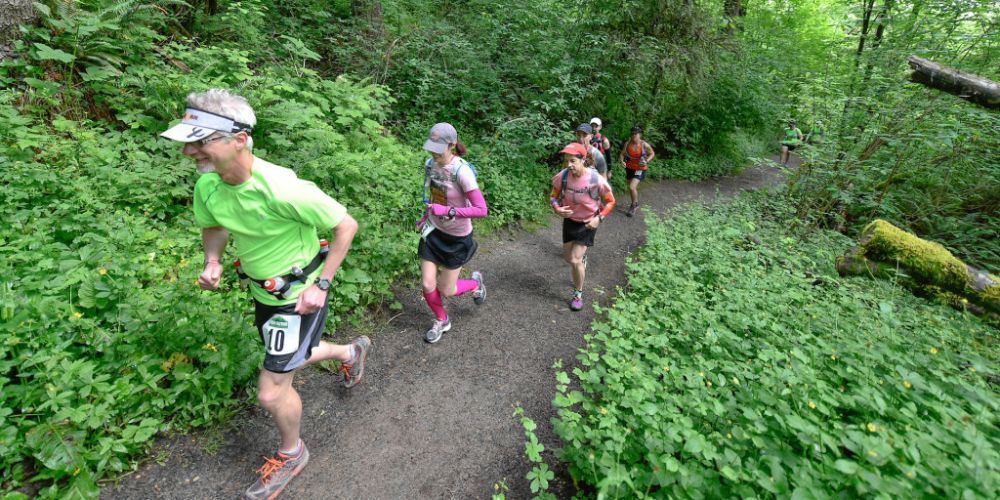William Flaiz is a lifelong athlete and outdoor enthusiast with a deep passion for adventure and sports. With over two decades of experience competing in marathons, triathlons, adventure races, and a wide range of recreational activities, William brings a wealth of knowledge to Sports and Nature Gear. Having explored 49 U.S. states and over 25 national parks, his extensive travels and hands-on experience with gear and gadgets provide readers with practical, expert advice for their own outdoor adventures. Whether it’s running, biking, kayaking, or hiking, William’s insights are invaluable to anyone looking to enhance their experience in the great outdoors. Read his full bio.
Trail Running Socks: Find the Perfect Pair for Your Adventure
The ideal trail running socks bring comfort and resilience right down to your feet. Brands from Swiftwick, Stance, Voormi to Smartwool have distinguished themselves, offering specifications like moisture-wicking capabilities, cushioning effect and impressive durability. You might even be pleasantly surprised by the tactile details unique to each brand; the snug fit of Patagonia, the cozy warmth of Darn Tough, or even Swiftwick's deft touch at wicking sweat away before you think your feet are getting clammy. Next up, let's breeze through some of these features in finer detail.
The best trail running socks for long-distance races vary depending on individual preferences and foot characteristics. However, popular options such as Swiftwick's collection of men's trail running socks, known for their protection, support, and moisture-wicking properties, or Stance Run Light Crew Socks with seamless design and breathability, can be excellent choices. It's important to consider factors like cushioning, moisture-wicking capabilities, and durability when selecting the right socks for your running needs.
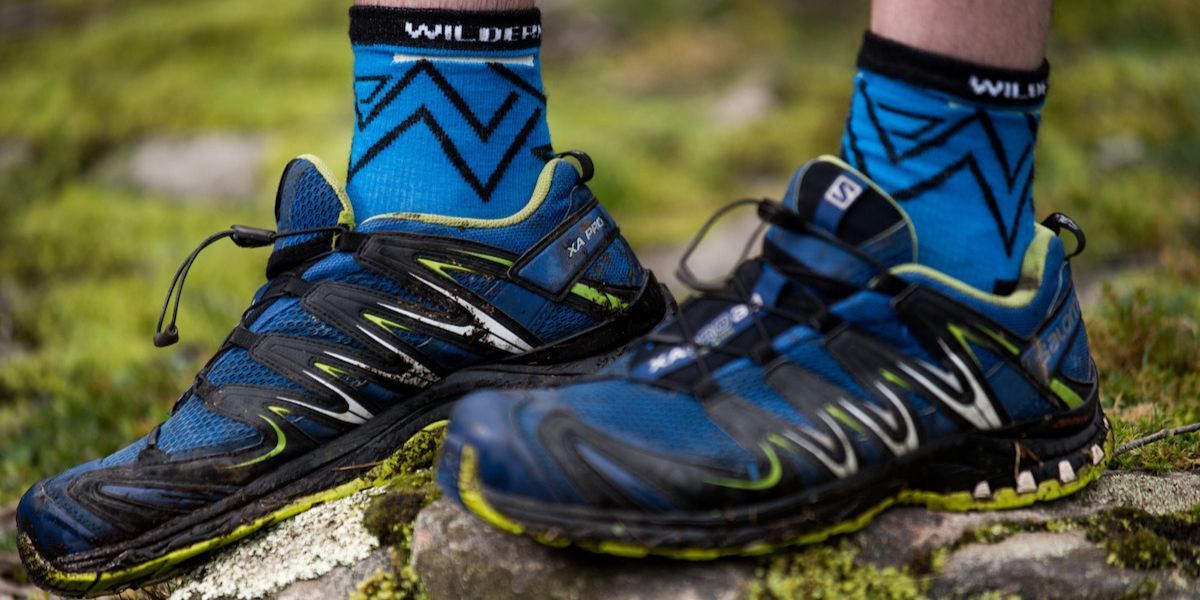
Top Trail Running Socks
When venturing onto the trails, your choice of socks can significantly impact your running experience. The right pair can keep you comfortable, protect your feet, and prevent blisters, while the wrong pair can lead to discomfort and potential injury. Let's take a closer look at some of the top trail running socks and what sets them apart.
Swiftwick , a brand renowned for its high-performance socks, offers the Maxus Line that features maximum cushioning for impact absorption on rough terrains. Meanwhile, Stance is known for its fusion of creative designs with technical functionalities, making their Performance Run collection a top choice for those seeking comfort with a pop of style along the trail.
Smartwool has carved a niche for itself with its merino wool blend socks, which are not only moisture-wicking but also naturally odor-resistant—a winning combination for long trail runs. On the other hand, Darn Tough is hailed for its durability and lifetime guarantee on all its products, making their socks a reliable investment.
Balega applies its proprietary Drynamix fabric blend to create Blister Resist socks that ensure dryness and prevent friction-induced blisters during extended runs. CEP utilizes compression technology in its Dynamic+ Ultralight Run socks to enhance circulation and reduce muscle soreness during strenuous trail runs.
Feetures is another popular choice among trail runners due to its tailored fit and targeted compression zones designed to provide support where it's needed most. Finally, Patagonia focuses on sustainability without compromising performance—its Run Lightweight and Merino Wool Lightweight socks boast eco-friendly materials without sacrificing durability.
These top trail running sock options cover a wide range of features, appealing to different needs and preferences. But what's most significant is how they contribute to enhancing your trail running experience—keeping you comfortable and blister-free while tackling challenging terrain.
Now, let's unravel the essential features that make these trail running socks stand out from the rest.
Important Features in Trail Running Socks
When it comes to trail running, the type of socks you choose can significantly impact your comfort and performance. Let's explore the key features to look for when selecting trail running socks that will keep your feet happy and healthy during your outdoor escapades.
Moisture Wicking: Keeping Feet Dry
The moisture-wicking factor of a sock is crucial, particularly during intense activities such as trail running. These specialized socks are designed to draw moisture, like sweat, away from the skin, helping to keep your feet dry and cool. The ability to wick moisture away from your skin reduces the likelihood of blisters and discomfort while out on the trails. Look for socks with high moisture-wicking capability, measured in grams of moisture absorbed per square meter.
Anti-Blister Design: Seamless Comfort
Chafing and blisters can turn an enjoyable run into a painful experience. This is why anti-blister design and seamless construction are essential features to prioritize in trail running socks. The absence of seams means fewer friction points, reducing the chances of hot spots and chafing, especially during long trail runs. Look for socks with anti-blister technology that enhances comfort and minimizes irritation, allowing you to focus on the beauty of nature rather than on your choice of footwear.
It's important to note: There's no one-size-fits-all solution for avoiding blisters or chafing during trail runs, but opting for well-designed socks certainly helps minimize these issues.
Compression: Enhanced Circulation and Support
Some trail running socks offer targeted compression to support specific areas of the foot and lower leg—aiming to enhance blood circulation and reduce muscle fatigue during running. Graduated compression can aid in reducing muscle oscillation during high-impact activities like running, helping with muscular endurance and overall performance. When searching for compression socks, consider the level of compression provided, usually measured in millimeters of mercury.
Ventilation: Breathability for Cool Comfort
During high-intensity activities like trail running, maintaining comfortable foot temperatures is paramount. Ventilation panels or mesh zones in socks play a pivotal role in enhancing breathability and reducing the risk of overheating. Proper ventilation helps regulate temperature and moisture inside the shoes, keeping your feet feeling fresh and preventing excessive sweating—a common culprit for blisters and discomfort during extended runs on challenging trails.
By carefully considering these essential features in trail running socks —moisture-wicking capabilities, anti-blister design, compression, and ventilation—you’ll be well-equipped to make an informed choice that aligns with your specific needs and preferences as a trail runner.
As we move forward in our exploration of ideal trail running gear, we'll now address the vital role that breathability plays in selecting the perfect pair of socks for your adventurous pursuits.
The Crucial Role of Breathability in Sock Selection
When it comes to trail running, the last thing you want to worry about is uncomfortable, sweaty feet that lead to painful blisters. That's why the breathability of your trail running socks is absolutely crucial. Breathability simply refers to how well a fabric allows air to circulate through it, and when it comes to socks, this can make all the difference in your comfort and performance. Imagine running across rugged terrain with hot, humid conditions—your socks need to work with your feet, not against them.
Moisture management is the key benefit of breathable trail running socks. As you pound the trails, your feet produce sweat, which can quickly turn into discomfort if not managed properly. A sock with good breathability can help wick moisture away from your skin and distribute it across the fabric's surface, allowing it to evaporate more easily. This not only keeps your feet dry but also reduces the risk of friction between your skin and the sock, ultimately minimizing the likelihood of blisters and discomfort during those long runs.
The material used in the socks plays a key role in determining their breathability. For example, merino wool has excellent moisture-wicking properties and helps maintain a dry environment for your feet. Meanwhile, synthetic materials like polyester or nylon are known for their quick-drying capabilities, making them suitable for intense physical activities such as trail running. Your choice should depend on factors such as the climate you'll be running in and your personal preference.
In addition to the right material, look for socks with mesh or ventilation zones strategically placed throughout the sock. These areas promote airflow around your feet, further enhancing breathability and aiding in temperature regulation. This means that even during demanding climbs or hot conditions, your feet won't feel suffocated by trapped heat.
It's worth noting that proper breathability isn't just a matter of comfort—it's also about maintaining the health of your feet and ensuring you can enjoy every run without unnecessary distractions.
Understanding how to choose socks with optimal breathability will undoubtedly elevate your trail running experience by keeping your feet dry and comfortable over long distances.
Now equipped with a solid foundation on the importance of breathability in trail running socks , let's delve into an important aspect—examining how cushioning and support contribute to an enjoyable and injury-free run.
The Impact of Cushioning and Support
Trail running exacts tremendous stress on your feet and ankles due to the varied terrain and uneven surfaces. That's why cushioning is crucial—it helps reduce the impact on your feet and provides protection from shock and friction, minimizing the risk of injury. When you're out on the trails, every step can be a new challenge, and the right cushioning can make all the difference in how you feel after a long run.
Many trail runners prefer socks with a higher level of cushioning to provide that extra comfort and support during their adventure. Studies have shown that a higher level of cushioning can significantly reduce foot fatigue and discomfort, allowing runners to go further without feeling as tired or sore.
However, it's important to find a balance, as too much cushioning can also lead to overheating and excessive moisture, which can cause blisters. Fortunately, leading sock brands like Swiftwick offer a variety of cushioning options tailored to different terrains, allowing runners to choose the right level of support based on their specific needs.
Arch Support
In addition to cushioning, arch support is another vital feature in trail running socks. Adequate arch support promotes proper foot alignment and stability, reducing fatigue and supporting overall foot health. It plays a crucial role in maintaining the structural integrity of your feet, especially during long runs on challenging trails.
Podiatrists often recommend socks with targeted arch support to help prevent common foot issues such as plantar fasciitis or overpronation while enhancing overall comfort and performance.
For instance, brands like CEP offer compression-style socks with built-in anatomical arch support designed to increase circulation and reduce muscle vibration, providing added stability to trail runners tackling technical terrains.
By prioritizing both cushioning and arch support when selecting your trail running socks, you're taking proactive steps to protect your feet from potential injuries and ensuring a more comfortable and enjoyable trail running experience. Remember, no two pairs of feet are the same — finding the right combination of cushioning and support tailored to your individual needs is key to unlocking your full potential as a trail runner.
Now that we've explored the essential aspects of cushioning and arch support in trail running socks , let's examine the symbiotic relationship between comfort and performance in more detail.
Making Your Trail Running Socks Last
You've found the perfect pair of trail running socks. You understand how crucial they are in keeping your feet comfortable, blister-free, and supported during your adventures. But do you know how to take care of them properly? Trail running socks endure significant wear and tear due to challenging terrains and long distances. Therefore, it's essential to maintain them so they can continue to offer the performance and protection you rely on.
To begin, always check the manufacturer's care instructions that come with your socks. These typically include guidelines on washing temperatures, detergents, drying methods, and storage. They often recommend washing the socks inside out, using a gentle cycle at a recommended temperature (usually around 30°C), and avoiding fabric softeners and bleach. Following these recommendations can go a long way in preserving the performance properties of the socks such as moisture-wicking and cushioning.
When it comes to drying your trail running socks, air-drying is usually preferred over using a dryer. The high heat of dryers can damage the technical fibers used in these socks, compromising their elasticity and moisture-wicking abilities. Additionally, storing your clean, dry socks in a cool, dry place away from direct sunlight can help maintain their quality for longer periods.
Fabric softeners should be avoided as they can decrease the moisture-wicking properties of the socks. Bleach can be harsh on the fabrics and may lead to deterioration over time.
It's also worth noting that to get the most out of your trail running socks, you should consider replacing them after covering 300-500 miles of running. This guideline varies depending on how frequently you run and the intensity of the trails you tackle. Over time, continuous use can cause the cushioning and compression features of the socks to wear down, diminishing their supportive properties.
Taking these steps to care for your trail running socks ensures that they continue to provide the protection and support needed for your runs. It not only extends their lifespan but also preserves their technical qualities, allowing you to maximize your comfort and performance during every adventure.
Therefore, by following these simple care instructions, you can keep your trail running socks in top condition for many miles to come.
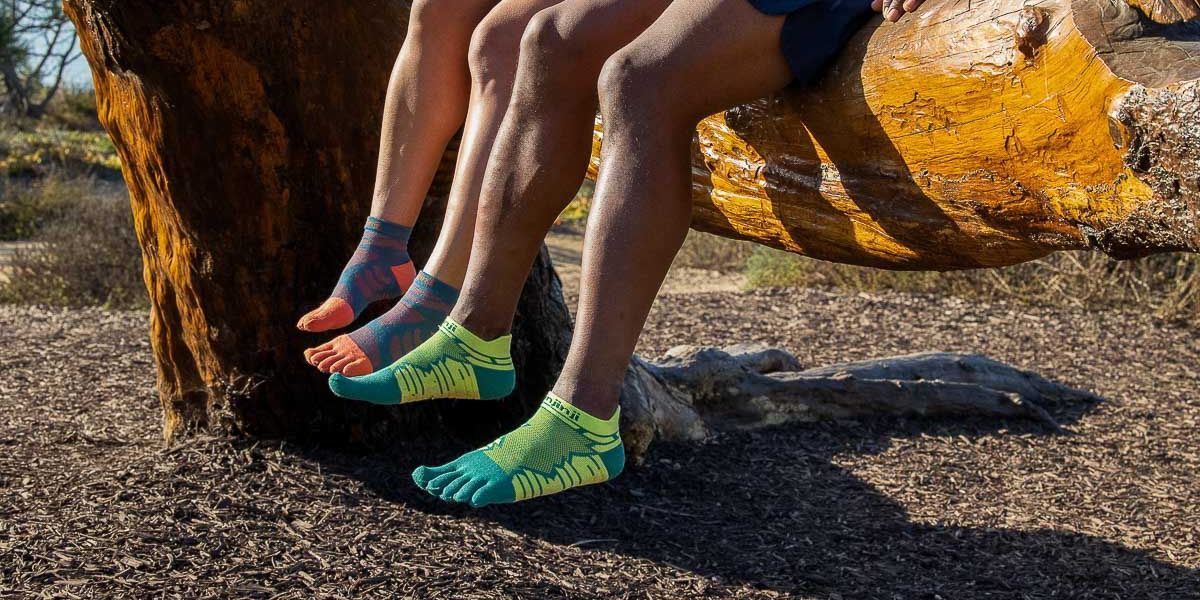
Guide to Choose the Perfect Pair
When selecting the best trail running socks, several crucial factors significantly impact your comfort and performance on the trails.
Consider Trail Terrain
As you evaluate the type of trails you typically run on, keep in mind that each type of terrain demands different features from your trail running socks. For rugged and uneven terrains, you need socks that offer proper cushioning to protect your feet from sharp rocks and roots, as well as additional support to prevent injuries and fatigue. Conversely, for smoother terrains, a lighter sock with less cushioning might be more suitable to maintain agility and speed.
Think about this: Just like you wouldn't wear flip-flops on a technical trail, you wouldn't want socks without cushioning either.
Fit and Comfort
The fit and comfort of your trail running socks are paramount. Ensure they fit snuggly without being too tight, as compression can enhance blood circulation and reduce muscle soreness during long runs. Look for socks that provide adequate cushioning and support in key areas such as the heel, arch, and sole. Remember, the right level of compression can make a world of difference in preventing blisters and providing stability.
Material Selection
The materials from which the socks are made can significantly affect their performance. Moisture-wicking and quick-drying fabrics such as merino wool or synthetic blends are ideal for trail running socks. These materials help wick away sweat, keeping your feet dry, cool, and blister-free during long runs.
Keep in mind that choosing the right trail running socks isn't just about comfort; it's also about protecting your feet from the unique challenges posed by varied terrains.
Each factor is influenced by different aspects in how trail running impacts a runner's comfort and performance. By meticulously considering these elements when choosing your trail running socks, you pave the way for an optimal running experience every time you hit the trails.
Having explored critical factors for finding the perfect pair of trail running socks , let's now address some common questions that runners often have about this essential gear.
Addressing Common Queries about Trail Running Socks
One of the most common questions about trail running socks relates to their durability—understandably so because trail running subjects socks to intense wear and tear. The good news is that reputable sock brands like Swiftwick use high-performance fibers that are specifically designed to withstand rugged terrain, providing not just comfort but also longevity. This means your investment in quality trail running socks will pay off over time, making them a reliable companion for your adventures.
However, durability alone might not be sufficient if the socks don't fit well. Many trail runners often wonder about sizing, especially since ill-fitting socks can cause discomfort and even blisters. It's vital to pay attention to the sizing guides provided by the manufacturers, as different brands may have variations in their size charts. Consider looking for brands like Stance Run Light Crew Socks or Smartwool Everyday Crew Socks that offer precise guidelines to ensure a proper fit, thereby reducing the risk of blisters and enhancing overall comfort during runs.
Another important aspect that trail runners consider is the level of compression provided by the socks. Compression levels impact muscle support and fatigue reduction, particularly over long distances. CEP Run Compression Tall Socks 4.0, for instance, offers excellent support during races and aid in pre-race travel and post-race recovery—a key consideration for many serious trail runners who seek enhanced performance and reduced muscle fatigue.
Furthermore, specific features such as anti-blister design and arch support play a pivotal role in ensuring a comfortable and enjoyable running experience. For instance, Darn Tough Hiking Socks are known for their durable construction as well as their capacity to provide excellent arch support, which reduces foot fatigue on challenging trails.
It's important to note that every individual's preferences might vary based on their unique needs and running style. A thorough understanding of these common queries helps make informed decisions when choosing trail running socks that cater to specific requirements.
By addressing these common questions about trail running socks , it becomes easier to pinpoint the right pair that meets your individual needs while ensuring comfort, durability, and performance.
AUTHOR
Nature's Playbook
As an Amazon Associate I earn from qualifying purchases.


